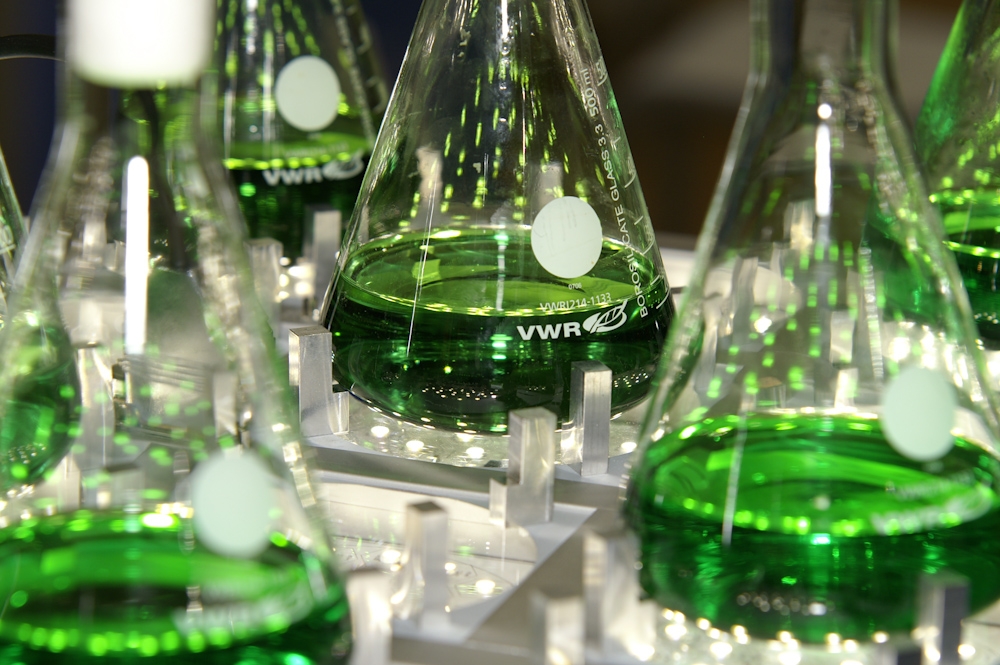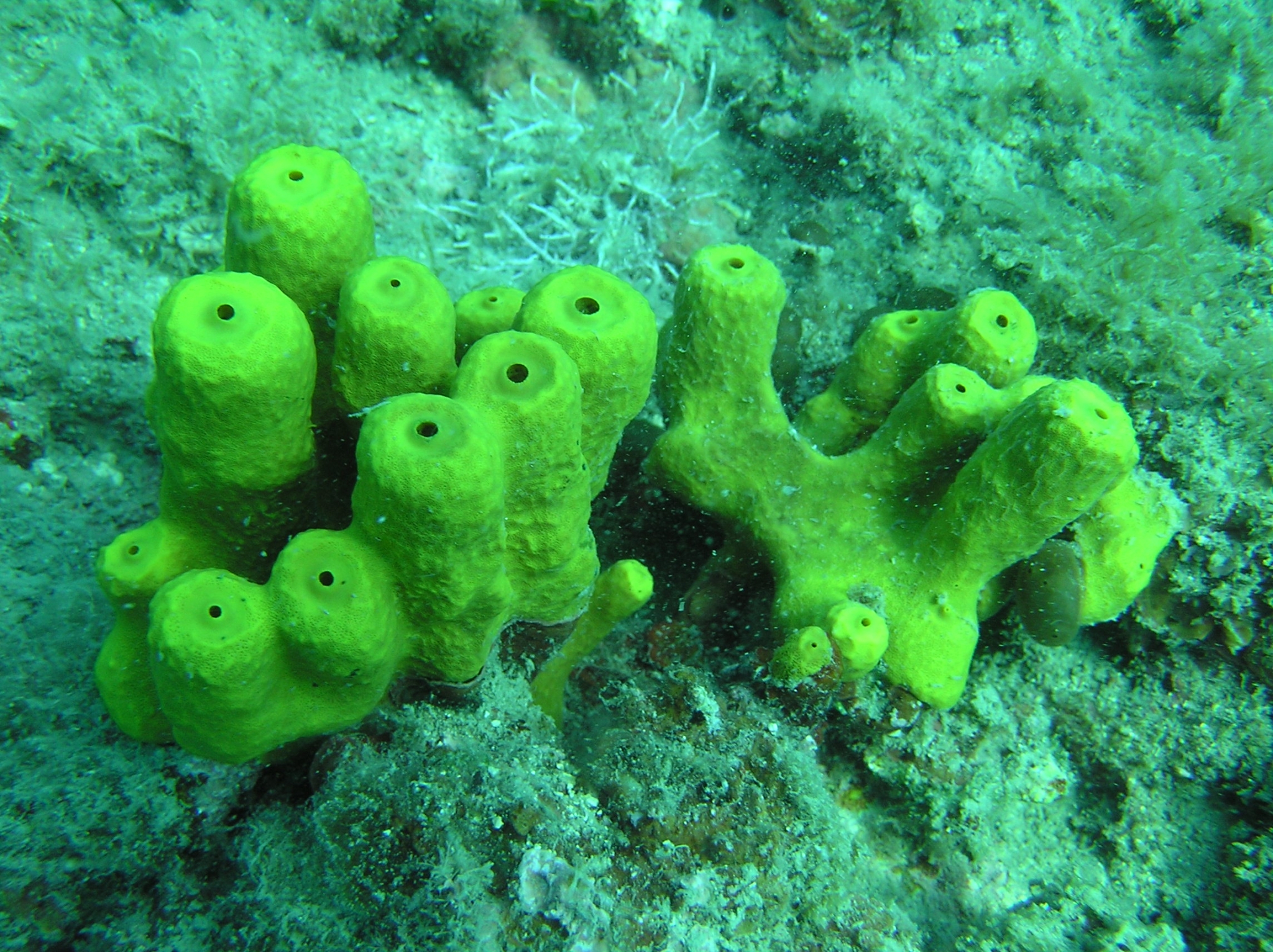Marine biotechnology: unknown sources of hope from the depths of the sea
Green, red, white and blue – the colours of biotechnology. Blue, i.e. marine biotechnology, is one of the less known branches. Biotechnological methods are used to investigate marine life and the results obtained from these investigations advance research in the fields of medicine and energy and into substances used as food supplements and cosmetics. The area of marine biotechnology is fairly diverse. Although it is not on the coast, even the southern German state of Baden-Württemberg is involved in marine biotechnology.
This is where biotechnology comes in, or rather marine biotechnology, to be more exact. Marine biotechnology is the application of science and technology to marine organisms. Marine microbes, sponges and algae produce substances that have been found to be effective against cancer and AIDS, they are also likely to become important providers of energy, they are used to produce substances such as glass or to obtain important knowledge for the production of new washing detergents active at lower temperatures.
Some pharmaceutical substances isolated from marine organisms have already been placed on the market. Rather like tiny factories embedded in coral reefs, cyanobacteria, also known as blue algae, are among the most important producers of a broad range of different substances (more than 200), including bioactive substances with antitumour, antibiotic, anti-inflammatory and antiviral effect.
*Yrr – fictitious, marine, unicellular jelly-like life form whose mission is to eliminate the human race by devastating the Earth’s oceans. The protagonist of the novel, Norwegian scientist Sigur Johanson, calls this life form “yrr”, a name he created by typing three letters at random on his keyboard (eds. note).
Biotechnological research involving marine organisms

Algae have the potential to be used in many different areas. They produce hydrogen, which will make them important sources of energy in the future; algae genes are transferred into soy and rapeseed, where they lead to the increased production of omega-3 fatty acids, essential fatty acids that cannot be synthesised by the human body, but are vital for normal metabolism. Researchers also focus on marine sponges, small sessile animals that have colonised the oceans for around 800 million years and developed an arsenal of mechanisms to defend themselves against predators. The substances, which scare predators off rather than killing them, contain toxic and pharmaceutically active substances which are now used in cancer research, in particular in leukaemia research.
Only a small fraction of biotechnological research – around one percent – involves marine organisms. Marine research is very expensive and the prospect of commercialising new discoveries is still a distant dream. The coastal states of Bremen and Schleswig-Holstein are leaders in the field of marine biotechnology in Germany. The Helmholtz Centre for Ocean Research in Kiel – GEOMAR – investigates the chemical, physical, biological and geological processes of all marine habitats and is also active in the field of marine microbiology. “Many of our projects are focused on marine microorganisms from which we can isolate natural substances. We are also very much focused on turning our research results into marketable commodities,” said Johanna Silber of GEOMAR, going on to add that GEOMAR has already identified a number of marine microbial compounds that are used in cosmetics, antibiotics and even pesticides.
Sessile organisms as pharmaceutical factories

Despite the fact that Baden-Württemberg is not on the coast, the marine life sciences branch is nevertheless represented here in the form of sponge and algae projects. Even a sponge species was discovered in Baden-Württemberg: Tethya wilhelma was discovered and characterised by Franz Brümmer and Dr. Michael Nickel in the zoo “Wilhelma” (Stuttgart) around ten years ago. The small, white sponge is ball-shaped. But what differentiates it from all other sponge species is that it is able to move around.
Researchers at the Karlsruhe Institute of Technology are focused on marine sponges and algae. Using Aplysina aerophoba, also known as Gold-sponge, as a model organism, Christoph Syldatk and his team are studying the metabolite production of ex situ sponge cultures. They are particularly interested in improving the cultivation of sponges from a biotechnological point of view. Cultivating sponges with the aim of producing bioactive substances in relatively large quantities has always been very difficult.
Aplysina aerophoba is a common sponge in the Mediterranean. It is of great interest to researchers due to its ability to produce the pharmaceutically active substance aeroplysinin-1 as a natural metabolite. The brominated low-molecular metabolite has an antibacterial effect and also impairs the growth of tumour cells. Although aeroplysinin-1 is commercially available, it still needs to be extracted from sponges grown in nature as the substance cannot be synthesised in the laboratory. The researchers are also focusing on microorganisms that live in symbiotic relationships with marine sponges. Sponge-associated microorganisms have also been found to produce some of the bioactive natural substances that were previously thought to have been produced by the sponge.
Algal bioreactors from Baden-Württemberg with great potential for the future
The energy sector is another important area of application for marine biotechnology. When energy is scarce, people tend to clamour for new, efficient and environmentally friendly energy carriers. In addition, new energy sources must have an environmentally friendly CO2 balance and must not use land set aside for agriculture. Algae could be a way out of this situation. Algae are relatively versatile; they can be used as food supplements and to produce biodiesel, oil and bioethanol. In addition, algal bioreactors like the ones produced by Baden-Württemberg-based Subitec GmbH can be set up anywhere. Subitec optimises its bioreactors for the cultivation of marine and freshwater algae according to the specific requirements of its clients. Many products can be produced with algae, including substances used as food supplements or in the cosmetics industry. Dr. Peter Ripplinger, CEO of Subitec, also points out that raw materials such as carbohydrates and lipids could be produced with algae as energy producers. “Future energy production will not be dominated by rapeseed; I firmly believe that the future production of energy from biomass will be based on algae,” said Ripplinger.
Algae bind CO2 as they grow. However, this CO2 is released when energy is produced. Algae can therefore be characterised as CO2 neutral. However, they can do even better than that: Prof. Clemens Posten and his team at the Karlsruhe Institute of Technology are working on bioprocesses that enable them to cultivate the green alga Chlamydomonas reinhardtii in a way that triggers it to produce environmentally-friendly hydrogen, both more cheaply and more energy efficiently than has been possible up until now.
Processing of marine waste in Europe
The Fraunhofer Institute for Interfacial Engineering and Biotechnology IGB in Stuttgart is part of the project and is focused on the development of enzymes that degrade chitin into monomers. Dr. Antje Laber (GEOMAR) does not regard marine biotechnology as a different branch of traditional biotechnology. “We are working with the same methods, devices and principles as the other branches. The only difference is that we are working with algae. I imagine that the potential of new characteristics and potentials offered by marine substances will in future become an integral part of classical biotechnology,” Laber said. And what this means in concrete terms is that marine biotechnology can support and stimulate the other branches of biotechnology with its findings.